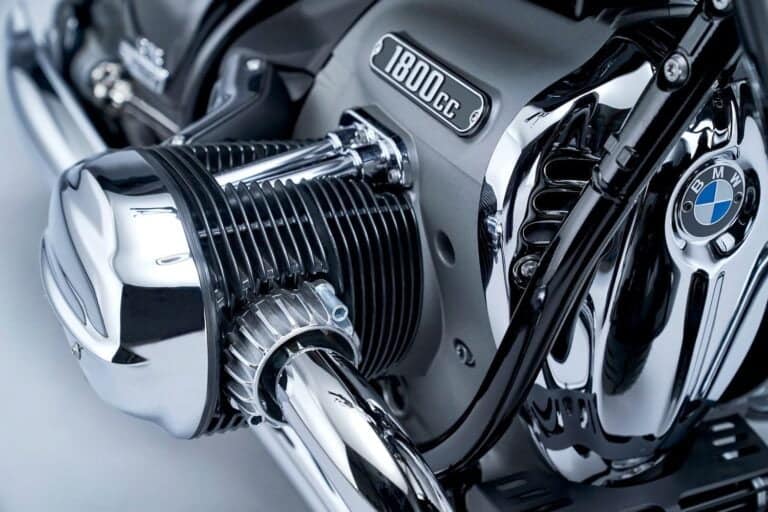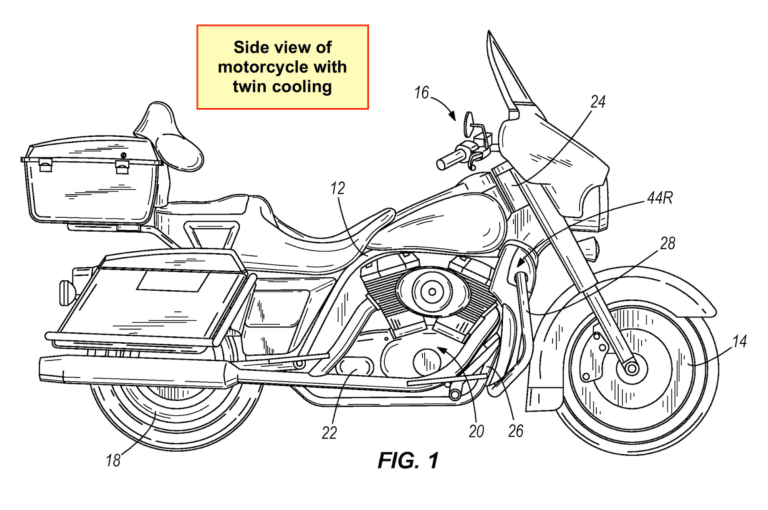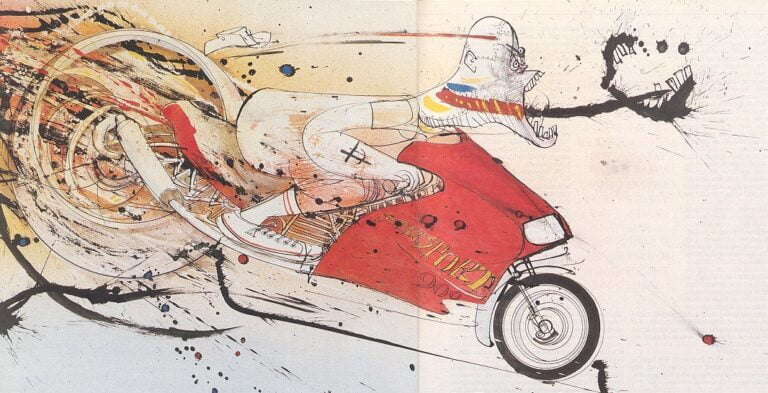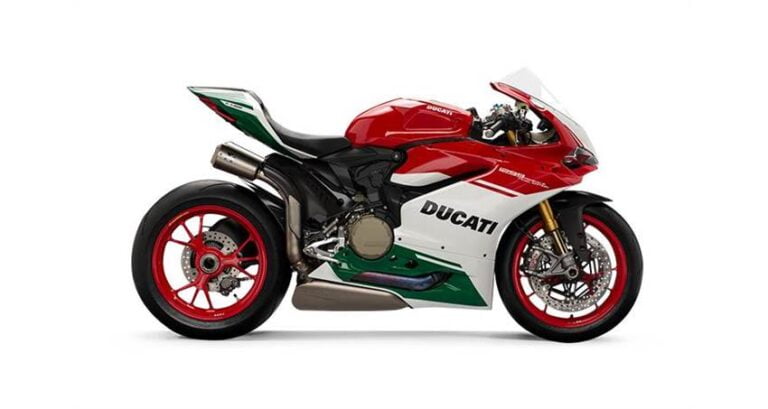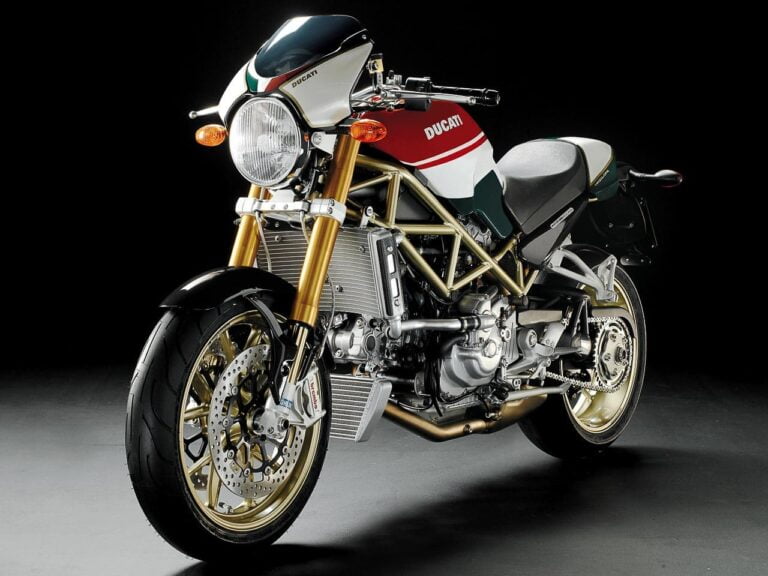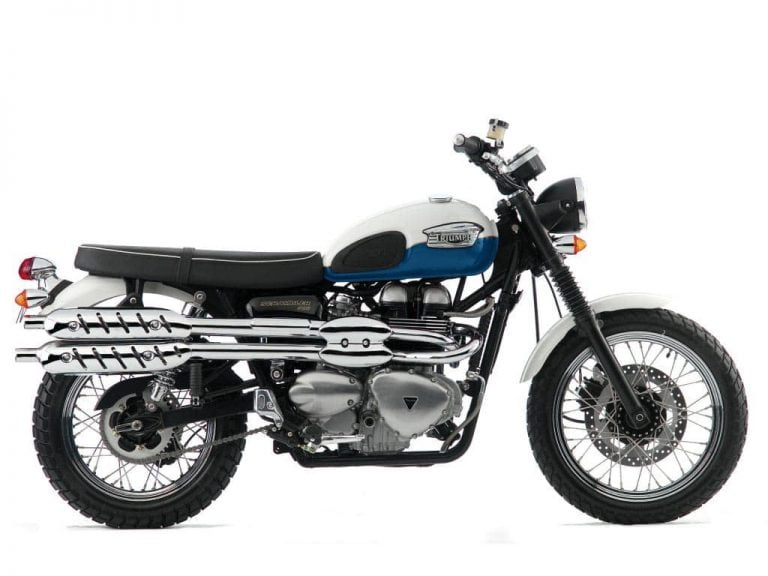Ducati just announced the Ducati Panigale V2 “Superquadro Final Edition” for the 2025 model year.
The Panigale V2 Superquadro FE has a lot that’s special about it. It has all the fruit, with a full Öhlins suspension system, custom livery, a billet aluminium triple clamp, carbon fibre sexhaust, adjustble footrests, and optional bits that make it for track use. Oh, and limited quantities… meaning they’re probably all sold.
But what’s more noteworthy is that this 2025 model year bike will mark the end of the line for the Superquadro engine in superbikes — and maybe in all motorcycles altogether.
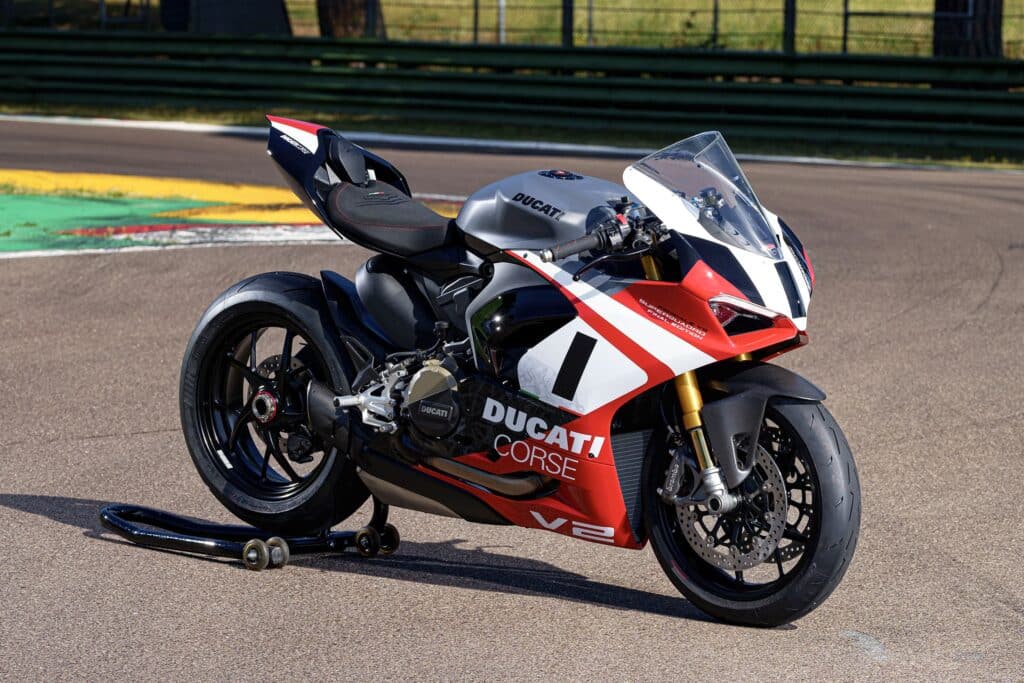
“Oh no!” you cry. “I still haven’t owned a Panigale V2!” Well, now’s your chance — maybe not one of the limited-run Final Editions, but there are plenty of others with the same high-spec components.
But before you go running to your local sellers to fire off a quick “Is this still available?” let’s reflect briefly on the Superquadro and what makes it special.
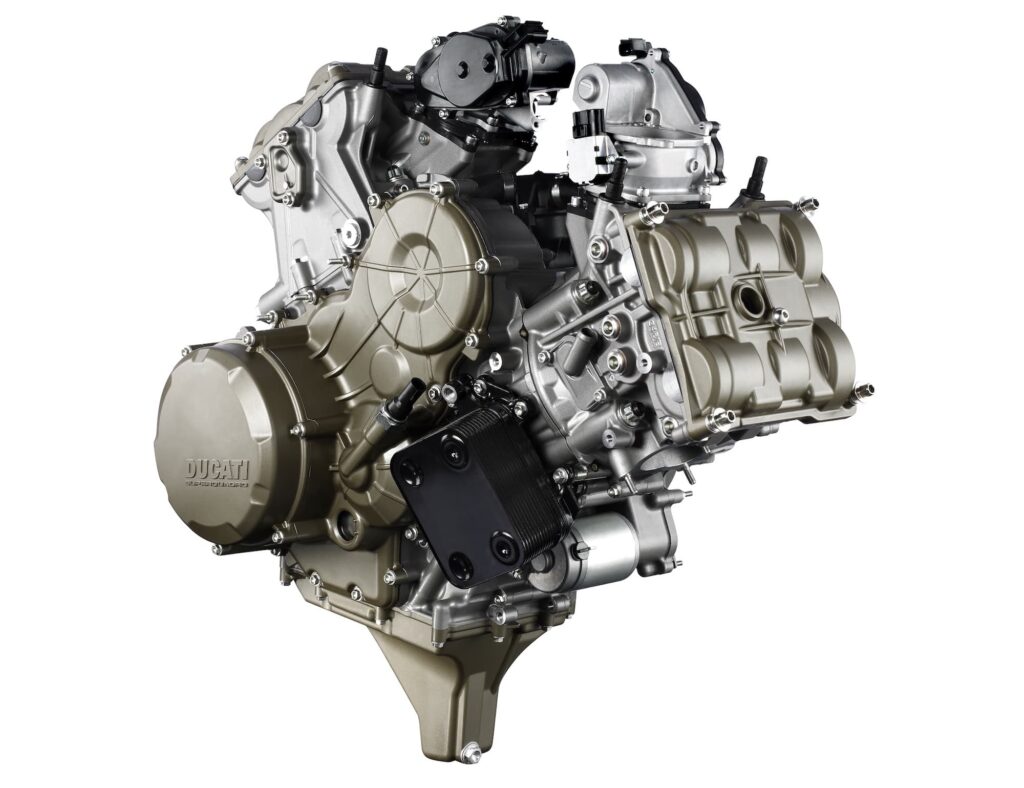
The Superquadro was first released in the first Ducati Panigale 1199 in 2012, replacing the Testastretta Evoluzione in the 1198 Superbike.
The Superquadro was most significantly different from its predecessor in that it was significantly more oversquare. In fact, “Superquadro” is the Italian term for “oversquare” used to describe all manner of bikes.
Like its predecessor engine, the Superquadro is a liquid-cooled 90-degree V-twin with desmodromic valve timing.
But the Superquadro got chain-driven cams, at least, which reduces the maintenance needed — no more changing belts (not the hardest part of maintenance, but still, one less thing to worry about).
The Superquadro starts beating the 1198’s engine in power at 8250 rpm, and reaches a sky-high 143 kW / 195 hp at 10750 rpm — just shy of the rev limiter at 11500 rpm.
There are quite a few technical improvements in the Superquadro engine that help it be a more compact, lighter, and more powerful engine.
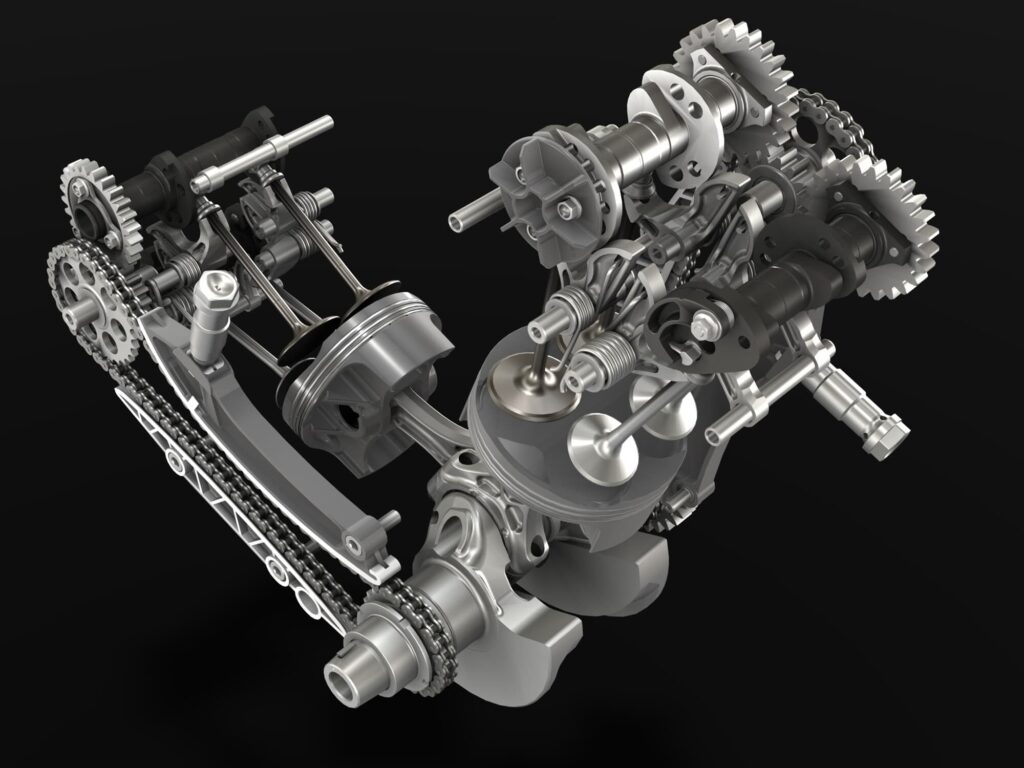
Firstly, the Superquadro got bigger valves, all made of titanium — tech usually reserved for the “R” models. The valves in the Superquadro are actuated by polymeric-like carbon-coated rocker arms — a technology that greatly reduces friction, aiding in the higher revving.
Matching the bigger valves are larger throttle bodies, with equivalent diameters of 67.5mm, vs the 1198’s throttle bodies’ 63.9 mm diameter. The throttles got RbW — the 1199 Panigale also heralded an era of tech.
Finally, Ducati has given the engine an “auto-decompressor” to help the engine turn over more easily from the starter. If you’ve ever owned an old Ducati (or several, as I have), you know what this is about! Hopefully fewer broken sprag clutches, too…
The net sum of that let Ducati double the valve service intervals (from 7500 miles / 12000 km to 15000 miles / 24000 km), bringing the maintenance intervals for the Superquadro into “normal” territory (i.e. similar to Japanese competitors).
You might also like reading this guide to Ducati engines
Here’s how the engines changed in the two most important bikes — the 1198 Superbike and the 1199 Panigale.
| Item | 1198 Superbike | 1199 Panigale | Notes |
|---|---|---|---|
| Bore / Stroke | 106 x 67.9 mm | 112 x 60.8 mm | Increase of bore/stroke ratio from 1.56 to 1.84:1 (much more oversquare) |
| Displacement | 1198.4 | 1198.0 | Effectively the same |
| RPM ceiling | 10,700 | 11,300 | Helped by shorter stroke |
| Peak power | 125 kW / 170 hp @ 9750 rpm | 143 kW / 195 hp @ 10,750 rpm | 25 hp increase! |
| Valve material | Steel | Titanium | Previously Titanium was just on R-spec bikes |
| Camshaft drive | Toothed belts | Chain | No more belts to replace every five years / valve service |
| Valve service interval | 7500 mi / 12000 km | 15000 mi / 24000 km | Double the service interval; much lower major maintenance cost |
It wasn’t all roses, I should point out. Some Ducati appassionati bemoaned the lack of midrange in the 1199 vs the 1198, a predictable outcome of an oversquare engine and presumably an intentional decision to optimise for top-end power over mid-range torque. Riders also complained that due to increased heat, being stuck in traffic wasn’t as pleasant — but is it ever?
The Superquadro engine lived in the top-end Panigale series for a while, making it into the 1299 Panigale too (with a 1285 cc engine, the most powerful v-twin Ducati has ever built). But Ducati made a mini-Superquadro in the form of the Ducati Panigale 899, from model year 2014.
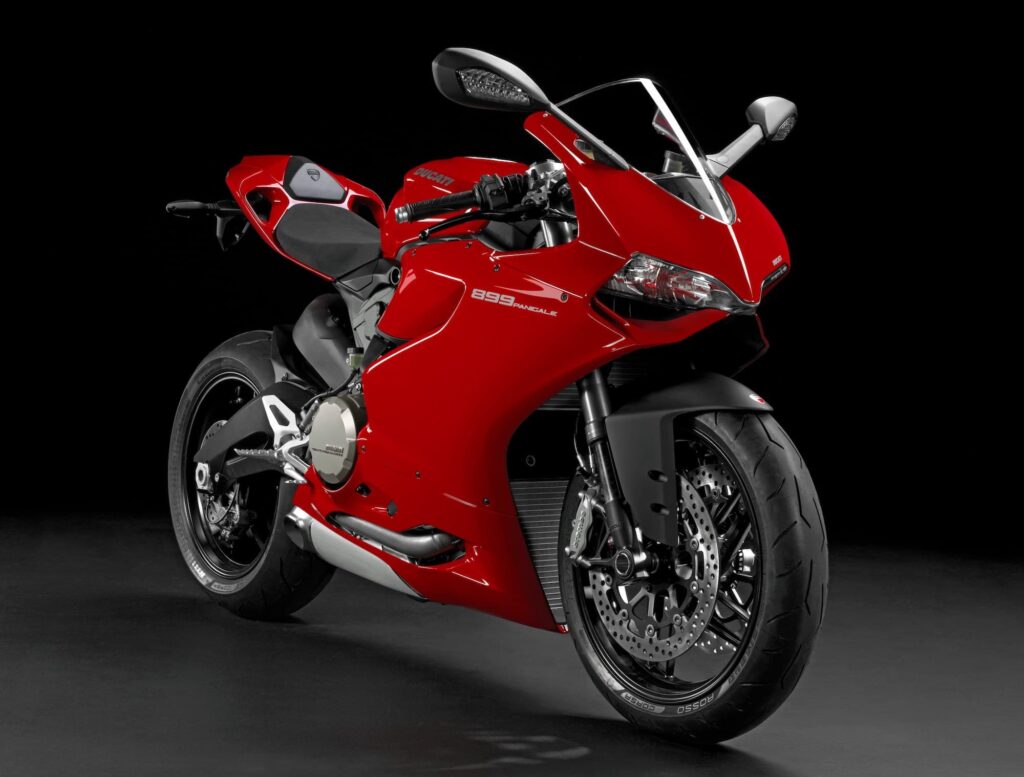
Ducati retired the Superquadro from its superbikes from the time of the 2018 Ducati Panigale V4. But it’s not like the little sibling variants were shy on power. The 899 (with an 898 cc engine) really was just shy of a literbike. The 959 (with a 955 cc engine) even less shy! And both made stonks of power, enough for any normal person to have loads of fun on the street.
In fact, Cycle World questioned whether the 899 Superquadro may be the “best Ducati engine ever“. Of course, that was back in 2014…
The 899’s motor was an exact external match for the 1199’s one — with the same mounting points. It has a lot of the same internals (though swapping titanium intake valves for steel ones, slightly heavier despite the smaller size), but a smaller inner bore and more cooling fluid, which lead to a less-stressed engine.
Cycle World calls the longer steel connecting rods (to compensate for the shorter stroke of the 899) its “trump card”. The higher stroke-to-conrod ratio reduces second-order imbalances, which means reduced vibrations, lower side-thrust on the pistons, and thus higher efficiewcy and less mechanical stress. Despite being longer, the 899’s connecting rods are lighter than those in the 1199!
So, the 899 had an awesome engine. They’re still a really cool bike — for some reason, I really dig the look of them, more so than most other bikes (I just really like the double swingarm look, despite the obvious aesthetic benefits of an exposed rear wheel). It just looks like a fun toy. Yes, you should go buy one.
But time marches on, and Ducati replaced the 899 Panigale with the 959 Panigale, with a larger 955-cc engine. Don’t worry. By all accounts, it’s a better engine all around.
Ducati then replaced the 959 Panigale with the Panigale V2, which got a single-sided swingarm again. The engine is essentially the same as the one in the 959 Panigale, though.
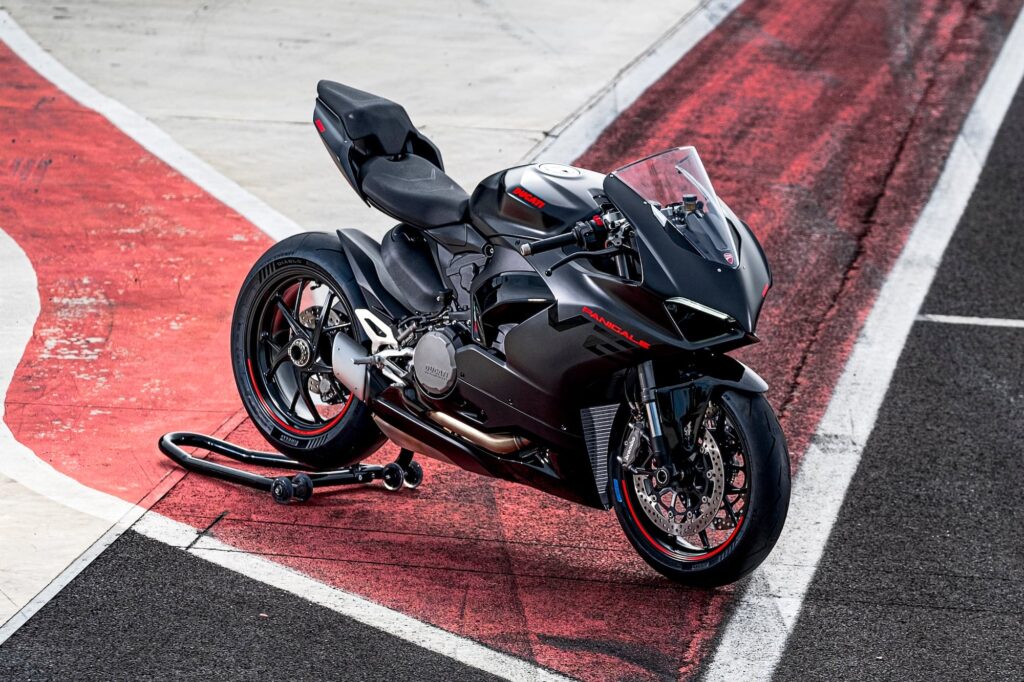
Unfortunately, the Panigale V2 is the end of the line for baby Panigales with the Superquadro motor. In fact, it may flag the end of the Superquadro in general.
So what’s next? Will Ducati make a baby Panigale again? Will it be with a V4? An electric motor? I don’t know.
For now, there’s still, of course, the Ducati Streetfighter V2, which still has a Superquadro v-twin engine, but unless Ducati goes in the same direction as the Speed Triple (keeping a superbike engine alive in a street bike), it may be the last in that line.
There’s also the Superquadro Mono, which debuted in the Ducati Hypermotard 698 Mono. That engine has a tremendous bore/stroke ratio of 1.86. Ducati will make that engine for a while yet, and may even bring it to other formats of bike — I’m not sure.

